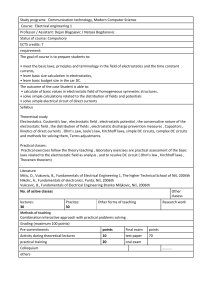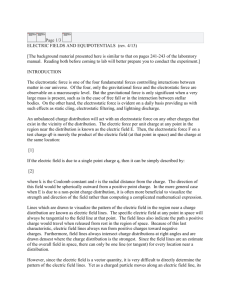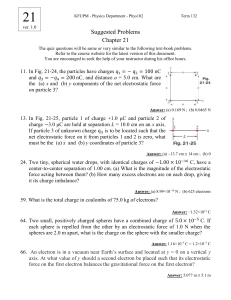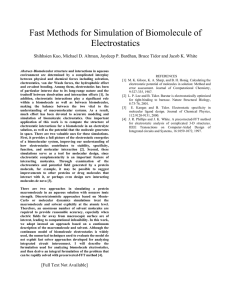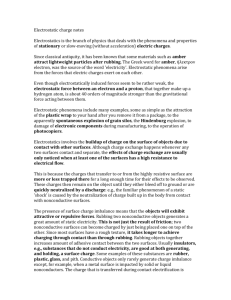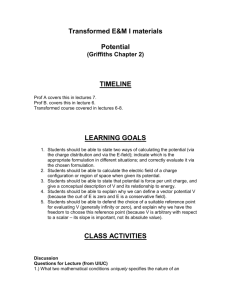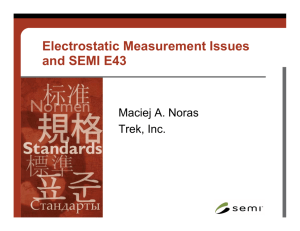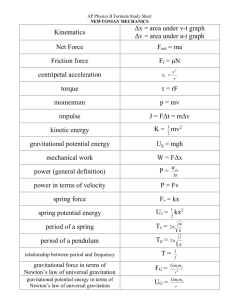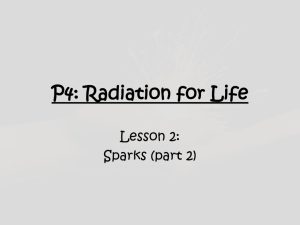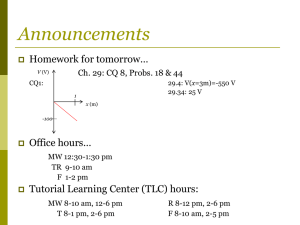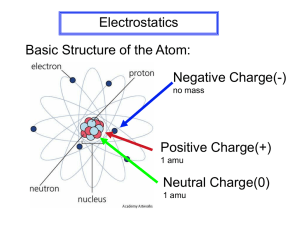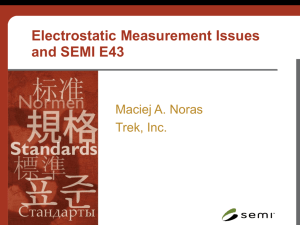Phys 201
advertisement
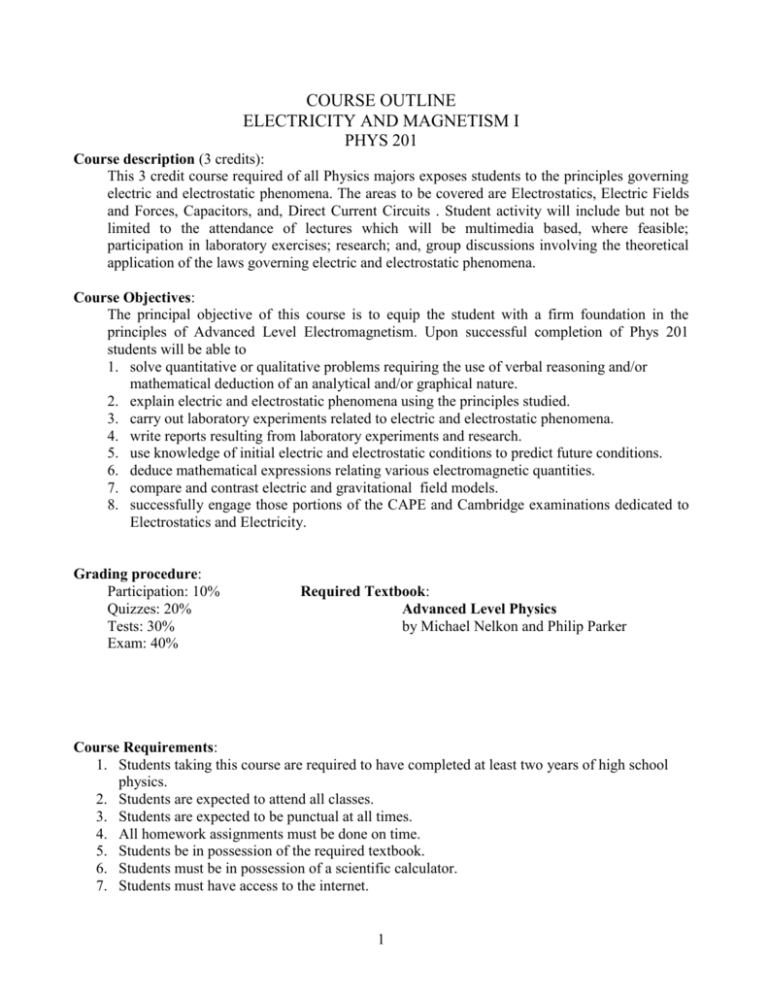
COURSE OUTLINE ELECTRICITY AND MAGNETISM I PHYS 201 Course description (3 credits): This 3 credit course required of all Physics majors exposes students to the principles governing electric and electrostatic phenomena. The areas to be covered are Electrostatics, Electric Fields and Forces, Capacitors, and, Direct Current Circuits . Student activity will include but not be limited to the attendance of lectures which will be multimedia based, where feasible; participation in laboratory exercises; research; and, group discussions involving the theoretical application of the laws governing electric and electrostatic phenomena. Course Objectives: The principal objective of this course is to equip the student with a firm foundation in the principles of Advanced Level Electromagnetism. Upon successful completion of Phys 201 students will be able to 1. solve quantitative or qualitative problems requiring the use of verbal reasoning and/or mathematical deduction of an analytical and/or graphical nature. 2. explain electric and electrostatic phenomena using the principles studied. 3. carry out laboratory experiments related to electric and electrostatic phenomena. 4. write reports resulting from laboratory experiments and research. 5. use knowledge of initial electric and electrostatic conditions to predict future conditions. 6. deduce mathematical expressions relating various electromagnetic quantities. 7. compare and contrast electric and gravitational field models. 8. successfully engage those portions of the CAPE and Cambridge examinations dedicated to Electrostatics and Electricity. Grading procedure: Participation: 10% Quizzes: 20% Tests: 30% Exam: 40% Required Textbook: Advanced Level Physics by Michael Nelkon and Philip Parker Course Requirements: 1. Students taking this course are required to have completed at least two years of high school physics. 2. Students are expected to attend all classes. 3. Students are expected to be punctual at all times. 4. All homework assignments must be done on time. 5. Students be in possession of the required textbook. 6. Students must be in possession of a scientific calculator. 7. Students must have access to the internet. 1 8. All work must be neatly done. Sloppy work will not be accepted. Detailed Outline The following topics provide a framework for the course but are not intended as limits on content. Electrostatics The Origin and Nature of Electricity Conductors and insulators Charge transfer by friction Charged objects and the forces they exert Attraction of charged body for uncharged bodies Gold leaf electroscope Charging by induction The Van de Graaff generator Faraday's ice-pail experiment Practical applications (lightning rods, photocopiers, dust extraction, spray painting, etc.) Electric Force and Fields Fundamental Law of Force between two charges Permitivity, relative permitivity Electric Field-Strength or Intensity Field patterns of lines of force Field-strength due to point charge; Flux from a point charge Gauss's Theorem Field due to charged sphere and plane conductor Electrostatic shielding Electric potential Potential difference due to a point charge Potential due to point charge and to charged sphere Potential Gradient and Field-Strength Intensity Equipotentials Potential due to a system of charges Comparison between Electrostatic and Gravitational Fields. Capacitors Capacitance:-definition and units Comparison of capacitances (vibrating reed and ballistic methods) Factors determining capacitance Parallel plate capacitor Capacitance of isolated sphere and concentric spheres Action of dielectric εo and its measurement Arrangements of Capacitors 2 Measuring charge and capacitance Energy of a charged capacitor Charge and Discharge in R-C circuit Time constant Rectangular pulse voltage and R-C circuit. Direct Electric Currents Ohm's law Joule's law Resistance Resistors in series and in parallel The potential divider Conversion of a galvanometer into a voltmeter Conversion of a galvanometer into an ammeter multimeters Use of voltmeter and ammeter Ohmic and non-ohmic conductors Resistivity Potential difference and Energy Electromotive Force and internal resistance Terminal p.d. Output power and efficiency Kirchoff's laws. Potentiometer and Wheatstone Bridge Measurements The potentiometer The Wheatstone Bridge 3
